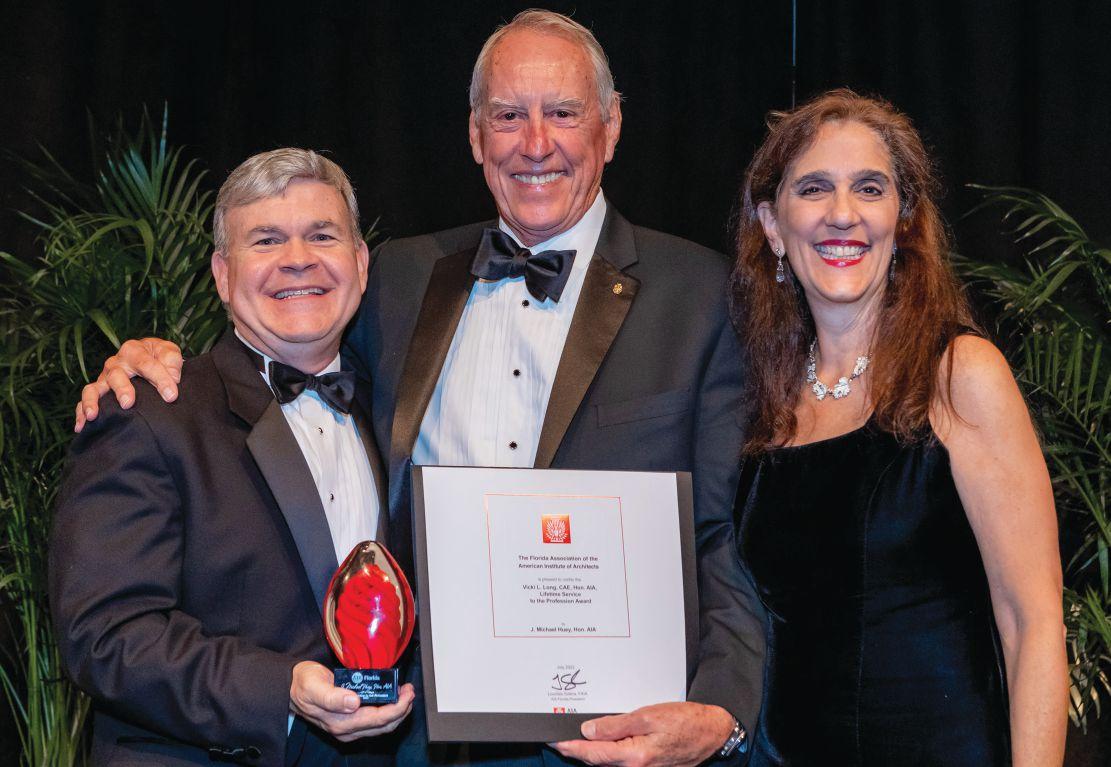
2 minute read
Amenities, Flexibility, Adaptability
from AIA Florida
By Beth Colvin
Some offices are looking more like hotels these days, with luxurious sitting areas, high-end café-type fixtures in the break rooms and amenities previously unheard of in the work environment.
All in the hopes of drawing people off their couches and back into the office.
“Because people are working from home, you have to draw them in,” said Steve Jernigan, FAIA. His firm, Goodwin Mills Cawood in Pensacola, just finished a new space for Landrum HR incorporating many of these features in their design.
Jernigan says that workplaces such as Google changed the office game, and now, the proven capability of working from home means many employers have to change what they are doing to get workers to stay in offices. He says the offices today are adding more amenities but also focusing on wellness aspects, such as bringing in more daylight.
Private offices are also out of favor, he said, with new builds going for hoteling and collaborative spaces where employees share desks based on the tasks they have for that day.
“Remote work has definitely changed the whole dynamic of how offices are designed,” he said, adding that more businesses are moving to Florida, fueling a boom in office space around the state. However, those offices are taking up less room than they used to with chunks of the workforce staying at home post-pandemic.
Jeffrey Huber, FAIA, at Brooks + Scarpa in Fort Lauderdale, at the other end of the state, says he thinks some people still want their own chair, but he does see flexibility and adaptability trending with more coworking spaces being built.
“I see more creatives moving into spaces abandoned by offices,” Huber said. “Creatives need spaces where we are around each other. We thrive on that. Iron sharpens iron.”
Coworking spaces are on the rise, agrees Chad Oppenheim, FAIA, and he says his firm, Oppenheim Architecture, was working on a series of coworking spaces in Switzerland that expanded during the pandemic. His firm “established a cookbook” of sorts that allowed the company to build coworking spaces at will across the country.
“Big, open collaborative spaces are our jam, anyway,” Oppenheim said. “We’re seeing a convergence of everything – hospitality, home, office. It’s an incredible blurring of the lines.”
He says his firm is being asked to design office spaces that look more like hotels, with plush collaborative areas, and it is also looking ahead to repurposing some of the space that remote work will leave behind, such as parking garages.

“The reality is that a lot of these buildings get torn down,” Oppenheim said, saying if they can think of adaptive reuse before the first iteration is even built, it is better for the environment and for the community as a whole.
Rob Bartlett, AIA, of BRPH in Melbourne, is hearing more talk about flexible work spaces, coworking and even subleasing office space for different purposes. While the physical environment has yet to change very much, Bartlett says it is sure to.
“I bet we will see some of that in years to come,” he said, adding there will be changes in the design of the workplace so when people are in the office, they can optimize their time there. The same is true in his own workspace.
“Our initial discussions were, when can we get everyone back in the office?” Bartlett said. “But as it dragged on, it became more of an understanding that there is a new paradigm.”
The effects of a global pandemic, technology and a highly competive employee recruiting environment have changed the traditional office. Florida’s architects are designing workspaces to encourage productivity and creativity while promoting well-being, fueling our state’s economy.











